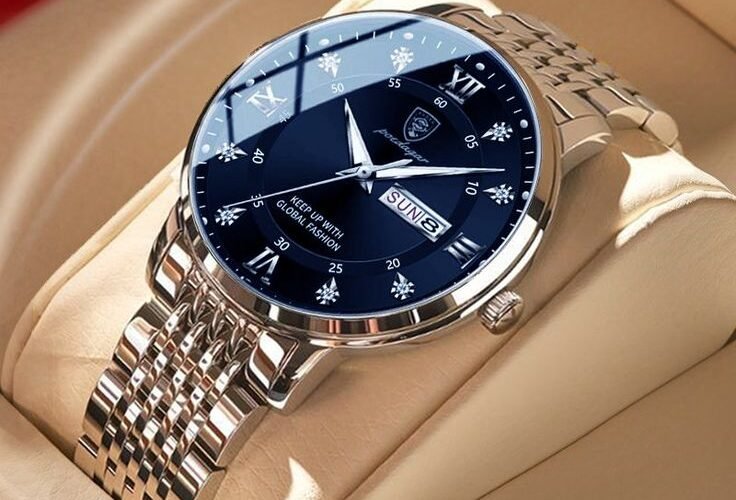Best Luxury Watch Brands Reviewed

Luxury watches represent more than just timekeeping devices. They reflect craftsmanship, heritage, status, and innovation. From precision engineering to iconic design, these timepieces symbolize excellence. Whether for collecting, investment, or style, choosing the right brand matters. This article reviews the best luxury watch brands, highlighting their history, signature models, and what makes them stand out in a crowded market.
1. Rolex: The Icon of Luxury and Performance
Rolex stands at the pinnacle of the luxury watch industry. Founded in 1905 in London and later moved to Geneva, Rolex built a reputation for durability, accuracy, and timeless appeal.
Key Models:
- Submariner: This diving watch handles underwater exploration with style. Its rotating bezel, luminous markers, and waterproof case appeal to both divers and collectors.
- Day-Date (President): Often seen on the wrists of world leaders and business moguls, this model displays both day and date while boasting an 18k gold case.
- GMT-Master II: Originally made for Pan Am pilots, this watch tracks two time zones simultaneously and carries strong resale value.
Why It Stands Out:
Rolex produces all parts in-house, including its gold alloys. Its watches retain value over decades and often increase in worth. Each model undergoes rigorous testing, ensuring mechanical precision. No marketing hype sustains the brand—only performance and recognition.
2. Patek Philippe: The Collector’s Dream
Patek Philippe began its legacy in 1839 in Geneva. Known for hand-finished movements, minute repeaters, and perpetual calendars, the brand appeals to serious collectors.
Key Models:
- Nautilus: This sporty yet elegant steel watch features a porthole design and embossed blue dial. Demand for the Nautilus drives waitlists for years.
- Grand Complications: These watches contain multiple complications like moon phases, split-second chronographs, and perpetual calendars—all in one piece.
- Calatrava: This dress watch represents understated elegance. Clean dials, slim cases, and traditional finishing define its design.
Why It Stands Out:
Patek Philippe watches pass through generations. The brand’s tagline—“You never actually own a Patek Philippe…”—resonates with its commitment to legacy. Independent ownership allows Patek to prioritize quality over production numbers. Auction houses routinely sell vintage Patek watches for millions.
3. Audemars Piguet: Bold Innovation
Founded in 1875 in Le Brassus, Switzerland, Audemars Piguet merges bold aesthetics with high horology. The brand shocked the industry in 1972 by releasing the Royal Oak—the first luxury sports watch in stainless steel.
Key Models:
- Royal Oak: Designed by Gérald Genta, this watch features a hexagonal bezel, exposed screws, and an integrated bracelet. It became a cultural icon and AP’s flagship.
- Royal Oak Offshore: This sportier version introduces a bolder case and added complications, like chronographs and tourbillons.
Why It Stands Out:
Audemars Piguet focuses on architectural design and modern luxury. Unlike many brands, it remains family-owned and independent. Each timepiece combines cutting-edge engineering with artistic detail.
4. Omega: Space, Sea, and Speed
Omega established itself in 1848 and gained worldwide fame with NASA’s Apollo missions. The Speedmaster became the first watch worn on the moon in 1969. Omega watches also time the Olympics and feature in James Bond films.
Key Models:
- Speedmaster Professional (Moonwatch): The chronograph that accompanied astronauts to the moon continues to impress with its durability and design.
- Seamaster Diver 300M: Popularized by James Bond, this diving watch combines style and performance under water.
- Constellation: This dressier line features refined detailing, elegant bracelets, and co-axial escapements.
Why It Stands Out:
Omega invests heavily in innovation. Its co-axial escapement reduces friction and extends servicing intervals. The Master Chronometer certification guarantees accuracy and resistance to magnetism. Omega offers Swiss prestige at a more accessible price point than Rolex or Patek.
5. Jaeger-LeCoultre: The Watchmaker’s Watchmaker
Located in the Vallée de Joux since 1833, Jaeger-LeCoultre (JLC) has supplied movements to top-tier brands including Patek and Audemars Piguet. It creates everything in-house and pioneers many complications.
Key Models:
- Reverso: Designed for polo players in the 1930s, its reversible case protects the dial and offers personalization options. It remains a symbol of Art Deco design.
- Master Control: A line that showcases classic aesthetics and complications like moon phases and chronographs.
- Duomètre: It features dual-wing mechanisms for enhanced precision.
Why It Stands Out:
JLC embodies technical mastery and aesthetic refinement. Its 1000-hour control process tests each watch rigorously. Collectors admire JLC for offering grand complications at relatively moderate prices.
6. Vacheron Constantin: The Oldest Watch Brand
Founded in 1755, Vacheron Constantin has operated continuously for over 265 years. As part of the Holy Trinity (with Patek and AP), the brand mixes tradition with avant-garde craftsmanship.
Key Models:
- Overseas: A luxury sports watch with an interchangeable strap system. It balances rugged performance with elegant design.
- Patrimony: This dress collection exudes minimalism with clean lines and slim profiles.
- Historiques: A tribute to iconic designs from Vacheron’s archives.
Why It Stands Out:
Vacheron Constantin holds Geneva Seal certification for its finishing standards. It produces complex pieces in small numbers, focusing on quality. Enthusiasts appreciate the brand’s attention to detail and artistic dials.
7. Richard Mille: Ultra-Modern Luxury
Richard Mille, founded in 2001, redefined luxury watchmaking with high-tech materials and futuristic designs. The brand’s tonneau-shaped cases and visible mechanics appeal to younger collectors and athletes.
Key Models:
- RM 011 Felipe Massa: A flyback chronograph with lightweight titanium components.
- RM 27-04 Rafael Nadal: Built to withstand high G-forces and worn during actual matches by the tennis star.
- RM 07-01: A women’s line that mixes elegance with Richard Mille’s engineering prowess.
Why It Stands Out:
Richard Mille uses materials like carbon TPT, titanium, and LITAL alloy. Prices soar due to limited production, innovative design, and celebrity endorsements. Buyers view these watches as status symbols and engineering marvels.
8. A. Lange & Söhne: German Precision
This Glashütte-based brand represents Germany’s answer to Swiss watchmaking. After a post-WWII hiatus, A. Lange & Söhne returned in 1994 under Richemont and quickly earned global respect.
Key Models:
- Lange 1: Its off-center dial, power reserve indicator, and large date display deliver distinctive design and functionality.
- Zeitwerk: This mechanical digital watch features jumping numerals powered by a constant-force escapement.
- Saxonia: Elegant, slim watches with minimalist German aesthetics.
Why It Stands Out:
A. Lange & Söhne hand-finishes every movement component. German silver plates, engraved balance cocks, and strict in-house standards set it apart. Connoisseurs favor its mechanical artistry and restrained elegance.
9. Cartier: The Jeweler of Kings
Cartier began as a jeweler in 1847, and later earned fame in the world of horology. Known for artistic designs and luxury appeal, Cartier watches blend heritage with refinement.
Key Models:
- Tank: Inspired by military tanks of WWI, this rectangular watch remains a classic on both male and female wrists.
- Ballon Bleu: A rounded case and hidden crown give it a soft, luxurious feel.
- Santos de Cartier: One of the first pilot watches, originally made for aviator Alberto Santos-Dumont.
Why It Stands Out:
Cartier bridges fashion and fine watchmaking. While not a traditional haute horlogerie brand, it designs timeless pieces that carry prestige and personality. Its watches suit formal occasions and luxury wardrobes.
Conclusion
Luxury watches stand as works of art and engineering. Each brand reviewed here reflects a different aspect of high-end horology—from Rolex’s global dominance and Omega’s innovation to Patek Philippe’s unmatched heritage and Richard Mille’s futuristic designs. Buyers must assess what they value most: craftsmanship, performance, legacy, or boldness. Whether worn for aesthetics or collected for investment, these timepieces represent more than just time—they capture a lifestyle.













